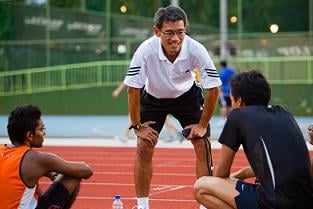
Performance enhancement. The key reason why any athlete decides to partake in this activity to make the necessary gains for their sport.
From a coaching standpoint, this is a great opportunity to apply the science and principle of strength and or speed training.
However, I have a saying that it does not matter how much you know as a coach, if you are not able to motivate an athlete to take action and be dedicated.
There are plenty of performance coaches who have, and should, devote so much of there time and effort into educating themselves on the right training strategies and principles to apply the science of training towards their athletes.
But a key area that is often overlooked but necessary in bringing out the absolute best in athlete, young ones especially, is the behavioral science behind effective coaching.
This has much to with being able to find common ground with athletes and tapping into their minds to be able to motivate them and give them an understanding of what they need to do to get where they want to go. And with so much focus being spent on just the scientific component of coaching, it is easy to forget that you are not just dealing with athletes, you are dealing with humans.
If an athlete does not buy in to what they are doing, then 1 of 2 things will happen. They will not give full effort, or they will not stick with the program.
The key to having a successful training program that deals with athletes is not only being on top of the most current training research and applying where necessary, but knowing how to influence an athlete so that they are committed to that program.
You must be able to connect with people effectively, and then know how to tailor that program accordingly to what they need.
In his book Conscious Coaching: The Art and Science of Building Buy In, Brett Bartholomew describes this type of coach as someone who,
“understands that successful training is more than just the sum of various physical drills and exercises. Success depends upon the interactions of the physical, psychological, emotional, and social components of a training program.”
Its a mixture of knowing WHAT drives an athlete and using an EVIDENCE based program with that information in mind and communicate so that you stroke a chord with that athlete.
The bottom line is that an athlete will be more motivated when there is a solid line of trust between athlete and player. And as a coach or trainer, if you are not taking the time to continually develop and improve your rapport with your athletes, then you can not channel your athletes as best as possible.
Successful training interventions begins with successful interactions. Connection is key.
